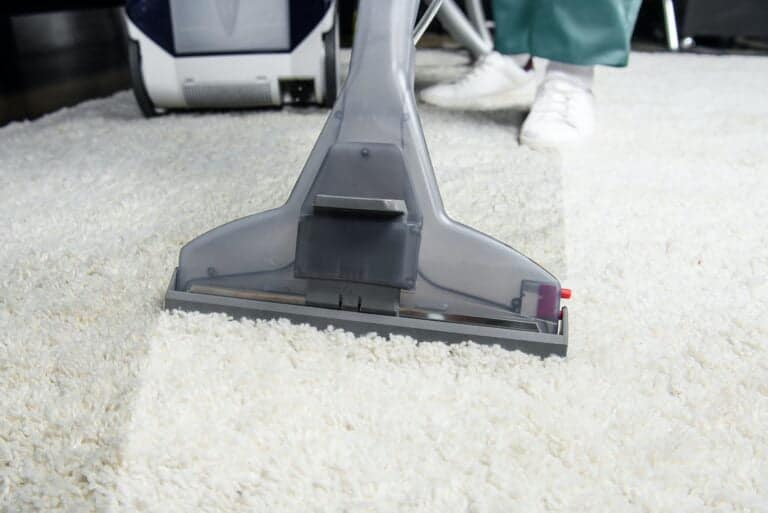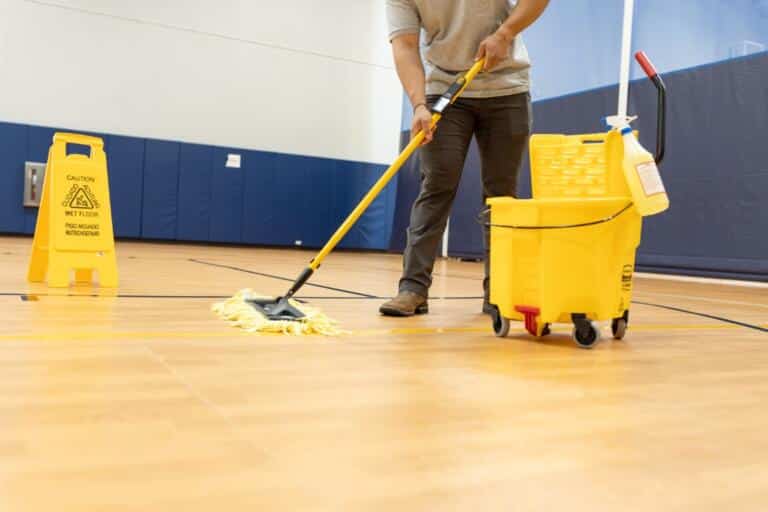Introduction: The Paramountcy of Tidiness in Commercial Edifices
In the realm of business, the appearance and cleanliness of a commercial building hold an indelible place. It is not merely about keeping the premises aesthetically appealing but it is also intertwined with health, safety, and work productivity.
Cleanliness in commercial buildings is a non-negotiable criterion that directly impacts the overall ambiance, employee morale and satisfaction, customer perception, and even brand reputation. A clean environment is conducive to fostering creativity and productivity among employees.
It also lends itself to minimizing health hazards by reducing harmful pollutants that might compromise air quality indoors. Moreover, maintaining a high standard of cleanliness in a commercial building significantly contributes to elongating the lifespan of infrastructure materials, thereby serving as a prudent investment for long-term upkeep.
Yet, despite such apparent importance attached to hygiene maintenance in commercial buildings, it’s disheartening to observe an array of common mistakes frequently made during cleaning operations. Careful attention must be paid not just to what meets the eye but also what slips under the radar.
Pervasive Mistakes Made During Cleaning
Often times commercial cleaning isn’t perceived through a magnifying lens leading to mistakes that hamper its efficacy; thus we shall spotlight them for corrective action. The first mistake often made is not empowering cleaning staff with suitable training necessary for professional cleaning operations –– resulting in suboptimal execution of tasks.
The second commonly observed error lies in neglecting high-touch areas – physical spaces like elevator buttons or door handles that accumulate germs due to frequent contact. These areas require special attention during cleanup procedures for optimal hygiene maintenance yet are often overlooked.
The third mistake frequently noticed revolves around usage of incorrect or low-quality cleaning supplies which could potentially harm surfaces or fail to provide thorough sanitation; this further escalates into more significant issues over time if not rectified promptly. Encapsulating all these blunders together underscores how important it is not only to maintain cleanliness but also adopt best practices, rectify common errors and ultimately elevate the standard of hygiene maintenance within any commercial building.
Delving into Commercial Building Cleaning
Understanding the fundamental aspects of commercial building cleaning requires first an exploration of its definition and scope. At its core, commercial building cleaning encompasses a wide range of activities designed to maintain a neat, tidy, and hygienic environment within business premises.
This incorporates everything from dusting office equipment, vacuuming carpets and upholstery, washing windows, sanitizing bathrooms to maintaining the exterior façade of the building. The scope extends even further to include specialized tasks such as deep-cleaning carpets and upholstery, cleaning air ducts, and maintaining hard surface floors.
The scale on which these tasks are accomplished differentiates commercial from residential cleaning as commercial buildings typically inhabit larger spaces requiring more specialized tools and techniques for effective cleaning. An integral part of this process is also adhering to health standards set by government regulatory bodies for public spaces to ensure safe environments for employees and visitors alike.
In essence, commercial building cleaning is not simply about ensuring a space looks appealing but also addresses deeper issues related to health regulations safeguarding public welfare. It is an intricate process that combines several custodial duties with the intention of preserving cleanliness in settings frequented by a significant number of individuals thereby helping manage potential health risks.
The Paramount Role Of Cleanliness In A Commercial Environment
The role that cleanliness plays in a commercial environment cannot be understated; it carries with it both tangible and intangible significances that contribute heavily towards shaping public perception about the establishment as well as facilitating productivity amongst staff. On one hand, cleanliness directly impacts how clients perceive a business upon initial encounter; pristine environments communicate professionalism while fostering trust in products or services offered through these establishments. First impressions count significantly in business dealings; hence well-maintained premises become instrumental in attracting new clientele while retaining existing ones.
Concurrently from an employee perspective cleanliness boosts morale leading to increased productivity. A clean working atmosphere ensures employees’ comfort while mitigating potential health risks associated with unkempt workplaces like allergies or infections leading to absenteeism thus reducing productivity.
Furthermore, regular maintenance preserves structural integrity thereby preventing unexpected repair expenses which could otherwise be detrimental financially if neglected over time due to lackadaisical attitudes towards routine cleaning schedules. In essence therefore maintaining high standards of cleanliness within a commercial environment transcends beyond aesthetic appeal carrying with it profound implications on overall business performance including revenue generation capacities hence reiterating its indispensable role.
The Invisible Saboteur: Inadequate Training of Cleaning Staff
One might not acknowledge the profound symbiosis between an immaculate commercial building and a well-trained cleaning staff until the balance is disrupted. The efficacy of cleaning operations hinges upon thorough training in both technological aptitude and procedural fluency.
Equipping staff with knowledge about different cleaning techniques, understanding the correct usage of equipment, and acknowledging various sanitary standards are quintessential facets of proper training. On the contrary, inadequately trained personnel can be detrimental to your business’s image and safety.
A lackluster approach to cleanliness could result in unsightly premises, potentially driving customers away. More alarmingly, inadequate sanitation may foster environments conducive to microbial growth leading to widespread health hazards.
An untrained eye might overlook subtleties that a thoroughly coached professional would be instinctively alert towards, such as grime concealed within crevices or germs lurking on overlooked surfaces. Evidently, subpar training not only compromises cleanliness but may inadvertently cultivate potential breeding grounds for harmful pathogens.
The Imperceptible Threats: Neglecting High-Touch Areas
High-touch areas are those parts of a commercial building that receive frequent human contact — think door handles, elevator buttons or communal kitchen appliances. These zones function as communal touchpoints making them ideal hotspots for germ transmission.
The perilous aspect of high-touch areas is their deceptiveness; they may appear innocuous while being teeming with microorganisms invisible to the naked eye. This underscores the necessity for comprehensive and regular sanitization of these hotspots to curb disease transmission and maintain a healthy working environment.
Neglecting these zones can manifest into substantial hazards over time; minor ailments like common colds can rapidly escalate into major outbreaks within a closed space such as an office building due to constant human interaction with these sites. Thus, overlooking high-touch areas doesn’t just compromise cleanliness; it endangers health too.
A False Economy: Using Incorrect or Low-Quality Cleaning Supplies
In pursuit of frugality, businesses often resort to inexpensive cleaning supplies under the mistaken impression that they all function equivalently. Proper sanitation warrants more than mere surface-level tidiness; it requires effective elimination of microbes which necessitates high-grade cleaning agents.
Bargain-priced supplies often lack necessary disinfective properties essential for eliminating bacteria or viruses effectively. Consequently, using low-quality products fails in delivering total sanitization even if they lend an illusionary gloss to surfaces.
Moreover incorrect supplies not only jeopardize cleanliness but imperil infrastructure too — harsh chemicals could corrode certain materials while ineffective ones might leave residues contributing towards long-term damage. Thus businesses must remember that scrimping on quality potentially invites larger expenses in repairs or health costs further down the line.
Disregarding Mother Nature: Ignoring Green Cleaning Practices
Gone are days when green practices were merely buzzwords – today they’re non-negotiable essentials given our alarming environmental scenario. Green cleaning practices involve adopting methods harmless towards both humans and our ecosystem alike – this includes using biodegradable products free from harmful toxins along with energy-efficient equipment which significantly reduces carbon footprint without compromising on effectiveness.
Ignorance towards eco-friendly methods inflicts dual damage – it contributes towards environmental degradation while exposing occupants’ health risks posed by hazardous chemicals frequently found in conventional sanitary solutions. Despite this undeniable reality many continue languishing in dated methods ignorant about potential repercussions their negligence could precipitate over time both at local & global levels alike
Skip Today Pay Tomorrow: Failing Establish Regular Cleaning Schedule
A well-structured regular cleaning schedule functions core pillar maintaining hygienic business premises It allows systematic comprehensive purging accumulated dirt & germs preventing any potential build-up As mundane this task seems its importance cannot overstated Established routines lead consistency which turn guarantees overall tidiness healthy environment
Misguided belief occasional intensive cleanup suffice drawing comparison sporadic crash diets versus consistent balanced eating habits While former provide temporary relief latter ensures long-term wellbeing Similarly neglecting regular sanitation let grime germs accumulate providing them fertile ground flourish .
This persistent neglect precipitate irreversible damage including foul odors unclean visuals structural harm caused persistent dirt accumulation all which negatively impact brand image employee morale Therefore absence regular cleaning schedule isn’t merely oversight neglect It’s ticking time bomb waiting explode .
Special Focus: Small Details Often Overlooked
Cleaning Air Vents: An Underappreciated Necessity
In the world of commercial building management, there lives a common oversight which frequently eludes attention, and that is the cleanliness of air vents. These humble components play a paramount role in maintaining superior indoor air quality.
They function as the lungs of a building, facilitating efficient airflow and ensuring optimal temperature control. The neglect of air vents can engender an array of detrimental outcomes.
Dust accumulation can impair functionality, leading to reduced energy efficiency and increased operational costs. More alarmingly, uncleaned vents might become breeding grounds for bacteria and mold spores, which could pose significant health risks for occupants.
Therefore, integrating air vent cleaning into your standard cleaning regimen can substantially enhance the overall indoor environment quality. Regularly maintained vents not only foster better working conditions but also curtail unnecessary repair or replacement expenses in the long run.
Maintaining Cleanliness in Hidden Areas: Exposing Silent Culprits
The significance of cleaning what lies within plain sight is well-known; however, hidden areas often remain untended due to their inconspicuous nature. These overlooked zones include spaces behind appliances, underneath rugs or furniture – locations that are out-of-sight yet critical to overall cleanliness.
Dirt and debris may accumulate over time in these undetectable spaces contributing to unpleasant odors or even pest infestations if left unattended for extended periods. Moreover, these hidden pockets can harbor allergens creating an unseen but impactful risk on inhabitants’ health.
Regular inspection and thorough cleaning of these covert areas should be considered an indispensable component of your comprehensive cleanliness strategy. This requires meticulousness but is invaluable in establishing genuinely pristine surroundings within a commercial setting.
Conclusion: Embracing Comprehensive Hygiene Practices
Undeniably, maintaining a clean commercial building is not merely about visual appeal; it encompasses factors beyond surface level considerations. From ensuring properly trained staff to attending overlooked details like clean air vents and hidden areas – each aspect holds its own weight in cultivating an environment conducive to productivity and wellbeing.
With knowledge comes empowerment; understanding common pitfalls allows one to avoid them effectively thereby elevating standards of cleanliness beyond expectations while simultaneously safeguarding occupants’ health and reducing unnecessary expenditure on maintenance or repairs. Remember always that cleanliness is more than just aesthetics; it plays a pivotally profound role in our daily lives – contributing positively towards our physical health as well as mental tranquility.
Avoiding common mistakes during the cleaning process of a commercial building is pivotal to maintaining a pristine and professional environment. Our team at commercial cleaning services Phoenix is adept at ensuring a thorough, mistake-free cleaning service, tailored to meet the unique needs of your commercial space. We prioritize utilizing effective techniques and products to deliver impeccable results every time.
















One Response
Green cleaning practices will definitely matter a lot in the future. With how popular the eco-friendly sentiment is becoming, it’s for the best that large offices do what they can to be more economical about their janitors. This is likely why local cleaning services are making new efforts to use products that won’t harm the local environment.